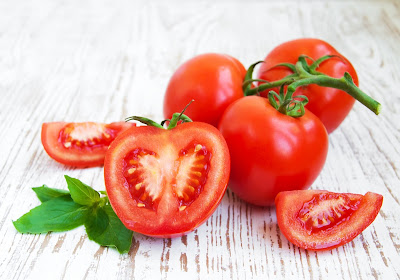Locally Grown Vs. Store-Bought
Nutritional Quality of Locally Grown Vs. Store-Bought Produce
As some may already know, the sweetness and juicy flavor of a fresh picked tomato or any produce always tastes a million times better than your store-bought. This is because, whether a produce is locally grown or store-bought there is a vast difference in nutritional content. This is due to four factors that differentiate the two types of produces: the ripeness of the produce, the varieties chosen, the length of time since the harvest, and the harvesting methods.
Ripeness of The Produce:
When produce is shipped to a grocery it has a long commute, typically 1,500 to 2,500 miles travel time. Due to this factor, the produce must be picked prematurely to arrive at the grocery store in sellable and consumable condition. For example, a tomato harvested prematurely will have about 31% less vitamin C, than tomatoes fully ripened. But vitamin C is not the only nutrient depleted, vitamin A, folic acid, lycopene, and other antioxidants are also reduced. Therefore, this method does not allow the fruit or vegetable to naturally ripen; thus, the produce never fully develops it's nutritional content.
The Varieties Chosen:
Produce shipped to grocery stores are not based on which taste the best, or have the most nutritional value; instead, the produce chosen is based on how well it will ship and continue to "look fresh" (so it is sellable). For example, tomatoes are often selected because when picked prematurely they look ripened in color, and their firm body is perfect for shipping and store display. Unfortunately, these characteristics do not formulate the best tasting or nutritional tomato!
Length of Time Since the Harvest:
As previously mentioned, the travel time for store-bought produce is very lengthy. While the produce is stored during the travel it is very difficult to keep optimal temperatures for them. In fact, vitamins deplete the most when stored for too long even if the temperatures are close to optimal. For example, lettuce stored for seven days in cold temperature, loses 46% of key nutrients. This is also true for many other fruits, vegetables, and herbs.
Harvesting Methods:
The handling of fruits and vegetables also affects the nutritional quality by the time they arrive at the grocery store. Today, commercial farms use mechanical harvesting methods which cause bruises and damage to the produce. Once damaged, this accelerates the process of losing nutrients as the produce lost the ability to fully ripen properly. For example, if a tomato is bruised it will likely have 15% less vitamin C, than the non-bruised tomato.
As
can be seen, local or home grown produce has greater nutritional content, as
there are less barriers to fruits and vegetables in reaching their full
nutritional potential.
Or if starting your own home garden appeals to you, go to Better Homes & Garden, and read the 10 steps for beginning a garden.
(http://www.aerogardenblog.com/wp-content/uploads/2012/10/White-Paper.pdf)


Comments
Post a Comment
Let your knowledge, ideas, and innovation be heard. Tell us what you think and know about this topic.